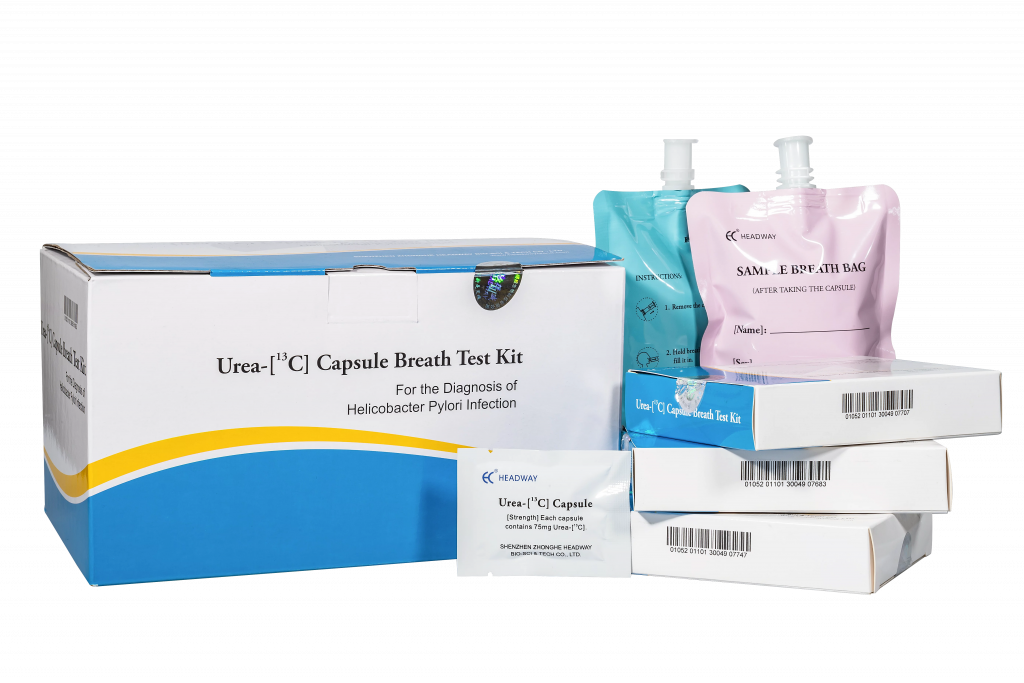Diagnosing H. pylori infection is crucial for effective treatment. The urea breath test (UBT) is a non-invasive method that helps detect the presence of this bacteria. Among the various UBT kits available, the 13C and 14C UBT test kits are commonly used. These kits are designed to evaluate the biological activity of H. pylori and provide diagnostic accuracy. In this article, we explore the similarities and differences between the 13C and 14C UBT test kits, specifically with Headway’s offerings.

Similarities Between 13C and 14C UBT Test Kits
Both the 13C and 14C UBT test kits rely on the same fundamental principle: detecting the urease enzyme produced by H. pylori. When H. pylori infects the stomach, it produces urease, which breaks down urea into carbon dioxide. The breath samples taken after ingesting a labeled urea capsule are then analyzed for changes in carbon dioxide levels, indicating the presence of H. pylori.
Both kits offer high diagnostic accuracy when quality standards for operation and detector calibration are maintained. The methodology ensures that both tests are reliable in identifying a positive or negative H. pylori infection.
Key Differences Between 13C and 14C UBT Test Kits
While the basic principle is similar, the main difference lies in the labeling of the urea used in the test.
13C UBT Test Kit: This breath test kit for H. pylori uses a 13C-labeled urea capsule. The patient must provide two breath samples—one before and one after ingesting the urea to compare the results.
14C UBT Test Kit: In contrast, the 14C UBT kit uses a 14C-labeled urea capsule. Only one breath sample is required after ingesting the capsule, simplifying the process for both the patient and healthcare provider.
Conclusion
Both the 13C and 14C UBT test kits are reliable tools for detecting H. pylori infection, with each offering distinct advantages based on sample collection and testing procedures. Headway‘s UBT test kits provide a solid foundation for diagnosing H. pylori, allowing for effective treatment decisions. Understanding the differences between these test kits can help healthcare providers select the best option for their patients’ needs.